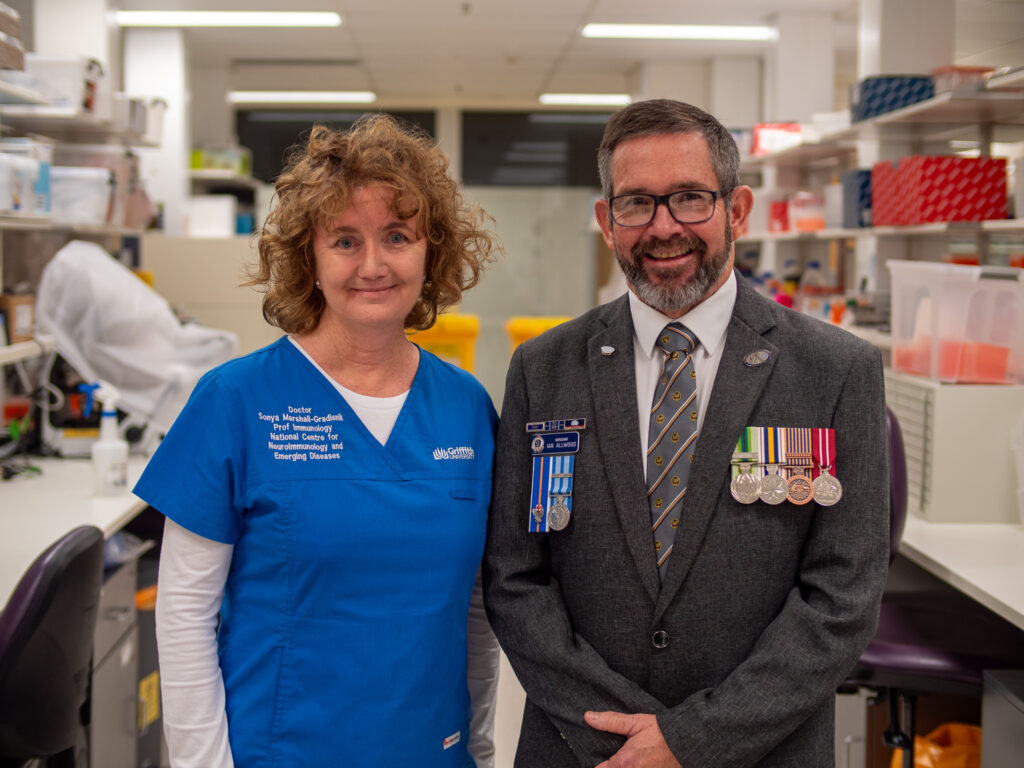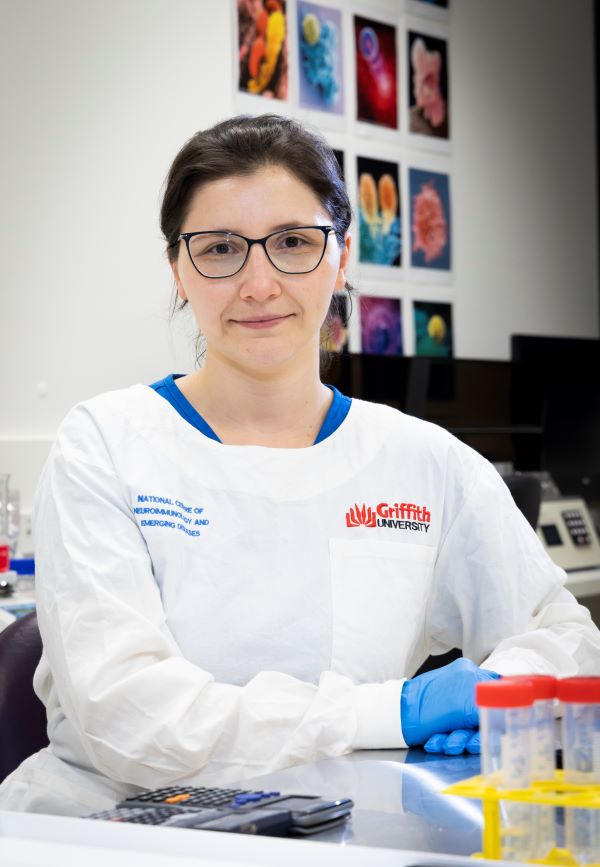Breakthrough solves mystery of Gulf War illness in veterans

Researchers at Griffith University have made a first-of-its-kind discovery that defective cell function in veterans suffering from Gulf War Syndrome (GWS) is likely due to intense exposure to dangerous biological and chemical agents during combat service.
The groundbreaking research, published in PLOS ONE, solves a mystery that has puzzled medical scientists for decades.
The study, conducted by the National Centre for Neuroimmunology and Emerging Diseases (NCNED) at Griffith University on the Gold Coast, found that cellular structures important for transporting calcium into cells, called transient receptor potential ion channels, are defective in veterans with GWI.
NCNED Director and author Professor Sonya Marshall-Gradisnik said calcium’s role as a signalling molecule in cells was crucial as it regulates important functions such as muscle contraction, nerve function and hormone secretion.
“The findings from our research provide clear scientific evidence that the health problems experienced by Gulf War veterans are directly related to exposure to certain hazardous substances during their service.
“Our study demonstrates a critical dysfunction of cellular ion channels, particularly transient receptor potential ion channels, in veterans with GWI.
“This discovery is a significant step forward in understanding this enigmatic and complex disease.”

According to Etianne Sasso, researcher and author at NCNED, the team’s findings were crucial in demystifying GWI because they provided clear scientific evidence to confirm the condition, which has long been difficult for those affected to recognize and accept.
“During the Gulf War, military personnel were exposed to a wide range of influences, including environmental hazards and biological and chemical warfare agents,” she said.
“Our research clearly shows that the cell structures in the human body are sensitive and vulnerable to these substances, which leads to faulty cell functions.
“This breakthrough in understanding the causes of GWI now gives researchers hope to develop new treatments to improve the future of our veterans.”
Gulf War veteran and GWI activist Ian Allwood said he was eternally grateful to Professor Marshall-Gradisnik and her team for their commitment to our cause.
“Being able to believe means everything to us,” he said.
“This research will change the lives of Gulf War veterans.
“For the veterans affected, this is the first step in identifying the causes.
“This is groundbreaking research that will hopefully open up new ways to treat the often debilitating symptoms.”
“Our veterans were prepared to risk their lives and represent Australia in the name of freedom.
“We owe them more than just gratitude.
“They suffered injuries as a direct result of their service.”
Of the nearly one million veterans from 41 countries who served in the 1990-1991 Gulf War, between 25 and 32 percent were affected by the Gulf War.
Over 1,800 Australians served in the Gulf War, mainly in the Navy and to a lesser extent in the Army and Air Force.
Many were exposed to multiple mandatory vaccinations, prophylactic administration of anti-nerve drugs, and various dangerous substances, including insecticides, nerve poisons, and depleted uranium.
These veterans suffered from a range of unexplained symptoms, including chronic fatigue, pain, inflammation, sleep disturbances, neurological and cognitive impairment, gastrointestinal and respiratory disorders, and malaise after exercise.
The article “Novel characterization of endogenous transient receptor potential melastatin 3 ion channels from Gulf War Syndrome participants” was published in PLOS ONE.

/University publication. This material from the original organization/authors may be time-sensitive in nature and has been edited for clarity, style and length. Mirage.News does not represent any institutional position or party, and all views, positions and conclusions expressed herein are solely those of the authors. View full content here.



